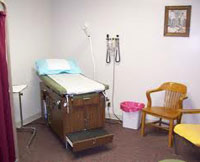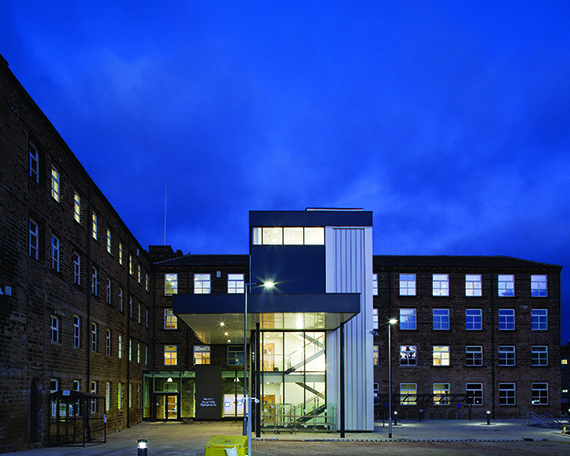Circle’s decision to pull out of the contract to manage Cambridge’s Hinchingbrooke Hospital sent waves of alarm through the ranks of the NHS’s private partners. They knew the NHS had problems – who didn’t? – but they thought the health economy could support them. The Hinchingbrooke decision suggested it might not be up to the job.
That was in January. With a general election on 7 May, those uncertainties are multiplying. A new government could mean new challenges for the NHS’s private-sector partners.
The key to the problem, say close observers, is the state of the UK’s health economy. By this they do not mean the UK’s economy as a whole – though obviously it has an influence. Instead, they are thinking of the peculiar financial dynamics of the NHS and the stresses faced by those commissioning care, and by those providing it. The distribution of scarce government funding between hospitals, primary care and social care is the cause of most of the difficulties, and in some localities the health economy is in serious trouble.
Saffron Cordery, director of policy and strategy for NHS Providers – the body that brings together England’s NHS foundation trusts – says: “We are going to need an improvement in the health economy, because what the Hinchingbrooke situation shows is that it is difficult to make anything work so long as your local health economy is in the condition it is in today.”
Alex Crawley, associate director at Savills, agrees: “This is all a problem with NHS England. It is a big machine that needs turning round. Circle tried, but it needs resolving more broadly than at one hospital. And although the Circle contract was to manage a hospital, not a property venture, there is a definite danger to property ventures, too. There will be knock-on effects.”
It is only a short journey from Hinchingbrooke to Peterborough, where another reason to be cautious is found. Peterborough and Stamford Hospitals NHS Foundation Trust is still struggling with the consequences of a PFI deal that costs £42m a year to service. Eventually its new hospital could cost as much as £2bn.
“We should expect to see more problems,” says Crawley. “There is no doubt the Circle and Peterborough experiences have had a damaging effect on joint ventures going forward. The NHS needs to resolve its own internal problems, rather than seeking quick fixes by signing deals with private-sector partners that ultimately do not work.”
Cordery, from her vantage point at NHS Providers, is a little more optimistic – but only a little. She also thinks the Hinchingbrooke decision could have a chilling effect.
“The go-ahead trusts will still consider entering into property joint ventures, although they will tread carefully,” she says. “Their issue is about managing the risk, especially the political and reputational risk. Some may think twice, but the chilling effect – if there is one – will be on the willingness of the private-sector partners to get involved. They are already wary of the scrutiny of risk-averse regulators.”

Ambitious hospital rebuilds and refurbishments are still being projected – Basingstoke and Hereford are the latest to go public with plans. No doubt there will be space for private-sector partners in many NHS foundation trusts’ plans. But the sickly state of the health economy may limit those options.
Crawley explains: “The long-term aim is to shift the patient load from hospitals to care homes and primary care. But if you don’t invest in either primary care or social care, as we haven’t recently, then you have knock-on effects for the hospitals, and they are simply not in a position to take on new private-sector projects.”
Lack of investment in primary care is becoming critical. About 4,000 of the 7,600 GP surgeries in England and Wales are considered by medical professionals to be unfit for purpose. Replacing them with 1,300 new buildings is estimated to cost about £5bn, along with £150m a year in running costs.
No surprise, then, that the British Property Federation welcomed the announcement in the chancellor’s Autumn Statement of £1bn to be invested over four years in GP services. It is not enough, but it is a start.
The BPF has been urging the health secretary to prioritise delivery of a new generation of modern, fit-for-purpose primary care facilities, arguing this could not only improve patient care but also produce considerable efficiency savings for the NHS – and wider economic benefits for the country as a whole.

A BPF statement says: “There is now consensus between patients’ groups and medical professionals that increasing the capability and capacity of out-of-hospital care is vital in order to sustain our NHS to be free at the point of need.
“Private-sector investment can help this transformation. However, we do need to see further movement of resources from the secondary care system into primary and community care to enable NHS England to have the capability to increase the amount it spends on new GP facilities.”
In the meantime the NHS is continuing to refer patients to private hospitals. Estimates suggest the number of patient referrals could grow by between 5% and 10% over the medium term. Might this open up new opportunities for private hospital development as an unexpected side-effect of problems in the NHS health economy? For some operators, the answer is yes.
Private hospital development is already attracting new partnerships, among them Nuffield Health’s decision to team up with Manchester developer and investor Bruntwood. The result will be a new hospital on the site of Manchester Metropolitan University’s former Elizabeth Gaskell campus.
However, the answer to the dilemmas raised by Hinchingbrooke could turn out to be politics, pure and simple.
“I think it all depends on who wins the general election,” says Cordery. “If Labour wins, and Andy Burnham takes over as health secretary, then we’ll see the gradual demise of Hinchingbrooke-type arrangements, if they aren’t kyboshed completely – at least for a few years, until economic pressures make themselves felt.”
Until the spring sunshine of general election day on 7 May, the future of private partnerships in the English NHS remains distinctly chilly.
Hinchingbrooke: a 10-year partnership that lasted only three
On 1 February 2012 a unique 10-year partnership with Circle started, and Hinchingbrooke Hospital became the first NHS Trust to be managed by an independent company.
Hinchingbrooke remained an NHS hospital, with 1,700 NHS staff and NHS premises. After struggling to restore order at the loss-making hospital, on 8 January 2015 Circle announced it would not be continuing the contract for its full 10-year life.
Pennine Property Partnership delivers outpatient centre
A new outpatient facility in Huddersfield is the latest fruit of private-public sector co-operation in the NHS.
The 56,000 sq ft conversion of a Grade II listed mill building has been delivered through an innovative “pathfinder” collaboration between Henry Boot Developments and Calderdale and Huddersfield NHS Foundation Trust. The “Pennine Property Partnership” was created to provide healthcare accommodation fit for the 21st century, in parallel with realising the potential of surplus property assets to generate the capital investment required to deliver improved medical services for the Calderdale and Huddersfield area.
Acre Mill, a former wire mill building that adjoins Huddersfield Royal Infirmary, is the first major project to be competed under the joint venture. It will now provide a centralised outpatient centre that is expected to serve more than 200,000 patient appointments every year. The development incorporates 200 permanent car parking spaces and an ambulance drop-off area.
Henry Boot Developments provided £8.25m private funding for the scheme and successfully managed the redevelopment project on-budget and to the exacting specification of the trust.













